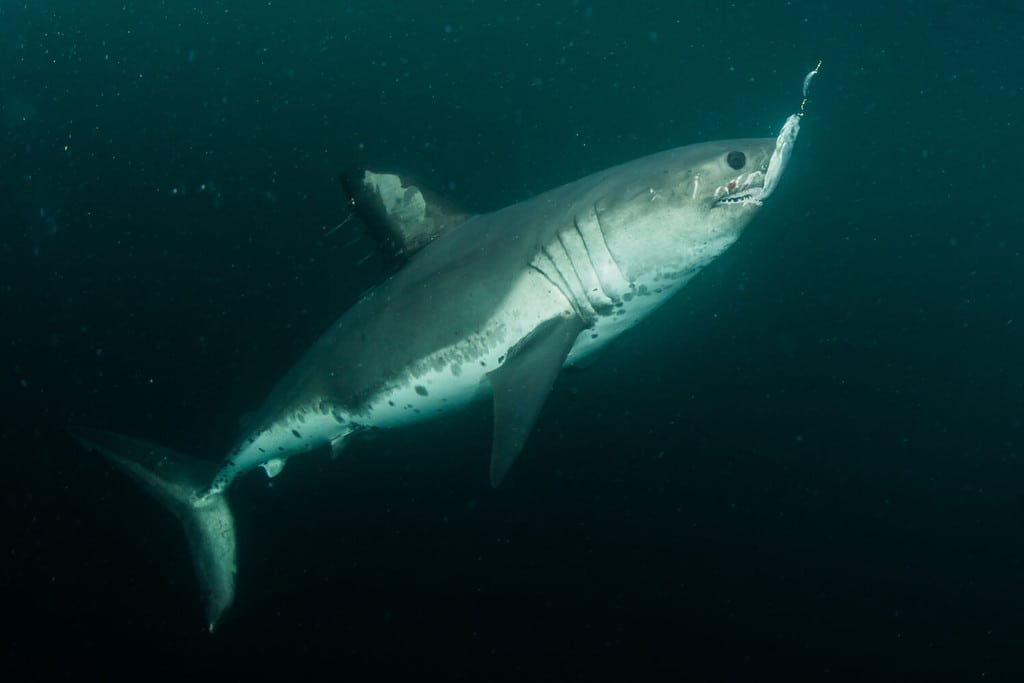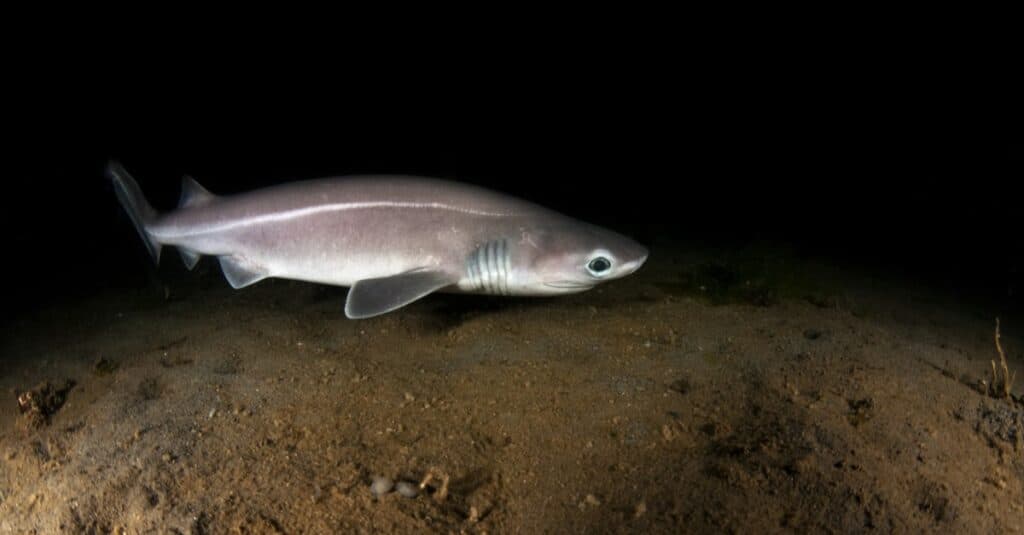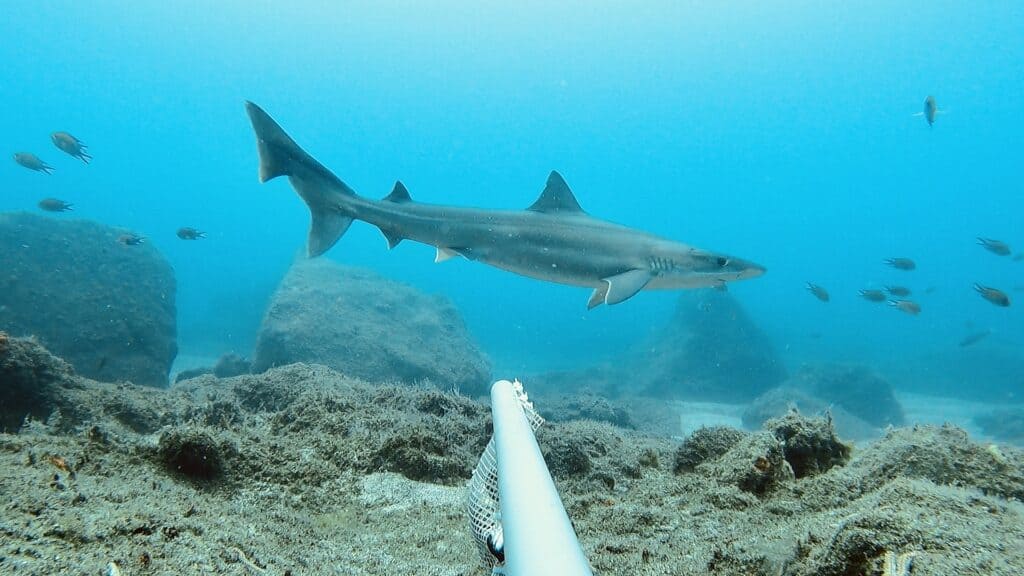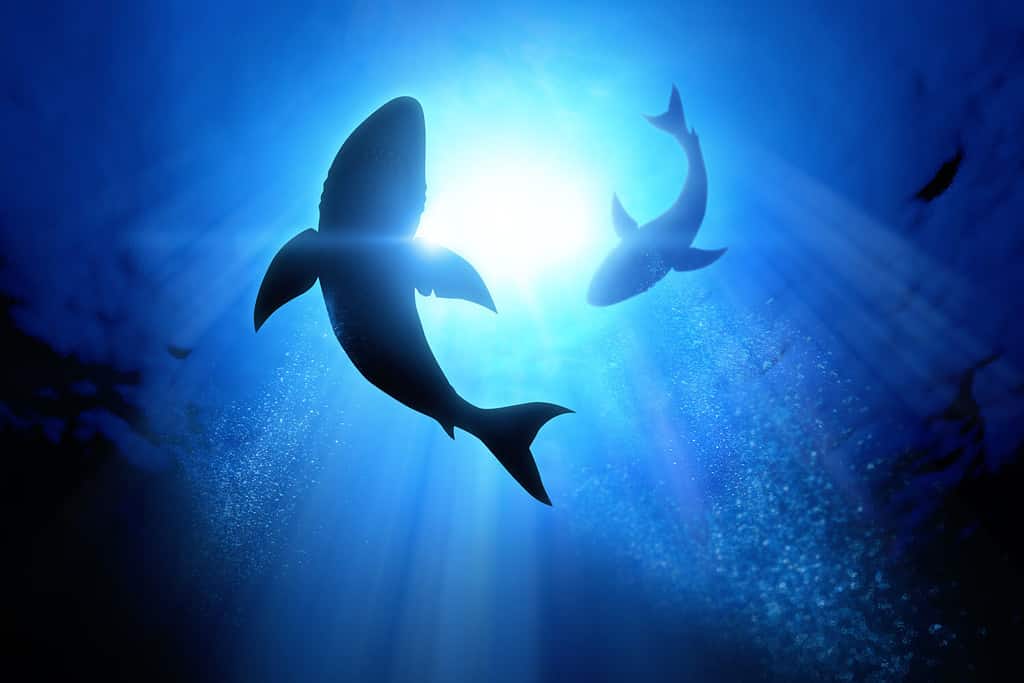Alaska may seem like it’s a bit too cold for sharks. However, there are actually several types of sharks found in Alaskan waters. That said, most of these species are not as common in Alaska as in other regions.
Here are some of the sharks you may expect to find in Alaska:
1. Pacific Sleeper Shark

Pacific
sleeper sharks
are pretty rare, but they are one of the most common sharks found in Alaskan waters.
©shweta.onlinetester/Shutterstock.com
These sharks are the largest sharks you’ll find in Alaska’s waters. They’re also a huge mystery for researchers and aren’t as heavily studied. Therefore, we don’t know as much about them as we know about other sharks.
These massive sharks are known for being exceptionally sluggish on account of their very slow metabolism. They typically live in cold-water habitats like Alaska, growing to over 20 feet long.
While these sharks are extremely slow-moving, they are opportunistic predators. They feed on various marine life, including seals and fish. Their prehistoric appearance is a sight to see, but they aren’t dangerous to humans in most instances.
2. Salmon Shark

These sharks are exceptionally under-studied, so there are
veryfew pictures of them.
©Warren Metcalf/Shutterstock.com
The Salmon Shark is a close relative to the Great White Shark. They’re known for being vibrantly colored with a preference for preying on salmon, which is why they commonly end up around Alaska.
They can reach up to 10 feet long and have sleek, streamlined bodies. They’re obviously made to go very fast, which helps them catch the sleek salmon. Usually, their upper bodies are dark blue or grey, while their underside is white. This dual coloration helps them stay camouflaged in open waters where they hunt.
Salmon Sharks are warm-blooded, which is unusual for most shark species, and this adaptation allows them to pursue and catch swift salmon with ease.
3. Spiny Dogfish

Spiny Dogfish
is a relatively small fish that only reaches a maximum of 4 feet long. That said, they are pretty common off the coast of Alaska.
©Joern_k/Shutterstock.com
These smaller sharks are a noteworthy species commonly found in Alaskan waters. They usually only measure 3 to 4 feet long and are named from the sharp spines on their dorsal fins.
They have very slender bodies and are generally grayish-brown. Their ability to adapt to several water conditions is one reason they do so well in Alaska. They also have a very adaptable diet, consuming whatever small fish and invertebrates they can find.
Their spines are thought to serve as a defensive mechanism against potential predators. They are also commonly found in schools, making them a pretty eerie sight.
4. Sixgill Shark

True to their name, sixgill sharks have six gill slits instead of the usual five.
©Greg Amptman/Shutterstock.com
This mysterious shark is a rare sight. It inhabits the deep Alaskan waters and has six gill slits – hence its name. It’s easy to differentiate from the more common five-gilled shark for this reason.
They’re typically pretty large, too. They can exceed 15 feet long and tend to dwell in very deep regions, which is why they are so rarely spotted. Their bodies are dark colors to help them blend in at these depths.
Sixgill sharks are opportunistic feeders, consuming a wide range of different animals like fish, squid, and carrion. They will eat whatever they can get their mouth on.
Because they are elusive, there isn’t much research done on these sharks. Their habitat makes them harder to study than other species.
5. Soupfin Shark

The soupfin shark, or school shark, is typically dark grey and about 6 feet long. They’re rarely seen near Alaska, but it isn’t completely unheard of.
©AshlieJMcivor / cc by-sa 4.0 – License
You may occasionally find the Soupfin shark in Alaska. However, they are primarily around in southern regions. These medium-sized sharks usually reach 6 to 7 feet. Their streamlined bodies are usually gray to brownish in color.
They’re known for their agility and powerful swimming, which makes them very efficient predators. Their diet typically consists of fish, like herring, sardines, and squid. However, they are also pretty opportunistic, eating just about anything they can find.
6. Great White Shark

One of the biggest sharks in the world, this species is absolutely massive and known for being somewhat aggressive towards humans.
©solarseven/Shutterstock.com
The Great White Shark is an iconic, formidable predator that is well-known around the world. They’re absolutely massive, with an exceptionally powerful build and imposing appearance.
Usually, they have a dark gray upper body and a white underside, which helps them stay camouflaged in open waters. They are characterized by their large, serrated teeth and exceptionally powerful jaws. These features allow them to hunt relatively large animals like seals and sea lions.
Great White Sharks are the apex predators in many parts of the world. They typically stick to warmer, coastal waters. However, there are some reported sightings in the northern Pacific Ocean. It’s thought that they may range outside of their typical home area when food is scarce.
7. Basking Shark

Due to their passive temperament, basking sharks have the smallest weight-to-brain weight ratio of any shark.
©Martin Prochazkacz/Shutterstock.com
Basking sharks are the second-largest shark species in the world after the Whale Shark. However, they aren’t dangerous to humans, as they are filter feeders. In other words, they consume primarily zooplankton and small fish by swimming around with their mouths open. Therefore, they aren’t as predatory as other shark species.
These sharks can reach huge sizes – sometimes over 40 feet or more. These gentle giants have a distinctive appearance thanks to their huge filtering mouths. They’re often pretty straightforward to identify, though they rarely venture close to humans.
8. Mako Shark

These mako sharks are pretty rare in Alaska, but that doesn’t mean you won’t see them at all.
©Alessandro De Maddalena/ via Getty Images
Mako Sharks consist of two main species: the Shortfin Mako and the Longfin Mako. These sharks are known for their exceptional speed and agility. They’re able to reach up to 60 mph in some cases, thanks to their streamlined body. They’re smaller sharks and don’t pose a risk to people.
That said, these sharks are exceptional predators. They can prey on a variety of fish and occasionally even squids. They’re also very migratory, which is why they may end up near Alaska, even if it isn’t in their usual range.
9. Blue Shark

This species is about as “average” as it gets. They’re very migratory and may occasionally wander into colder waters.
© Alessandro De Maddalena/ via Getty Images
Blue sharks are pelagic sharks known for their exceptional blue coloration and graceful swimming. As their name suggests, they are blueish with very long, slender bodies. They’re skilled hunters, but their smaller size means that they often only target smaller fish.
They are opportunistic and very migratory. Therefore, they can cover vast distances in search of food on occasion. Sometimes, they may end up in the northeastern Pacific – sometimes even in the northern reaches of Alaska.
Blue sharks are one of the widest-distributed species in the world.
Summary of 9 Types of Sharks Found in Alaskan Waters
| Number | Shark |
|---|---|
| 1 | Pacific Sleeper Shark |
| 2 | Salmon Shark |
| 3 | Spiny Dogfish |
| 4 | Sixgill Shark |
| 5 | Soupfin Shark |
| 6 | Great White Shark |
| 7 | Basking Shark |
| 8 | Mako Shark |
| 9 | Blue Shark |
The photo featured at the top of this post is © HikeAndShoot/Shutterstock.com
Thank you for reading! Have some feedback for us? Contact the AZ Animals editorial team.







